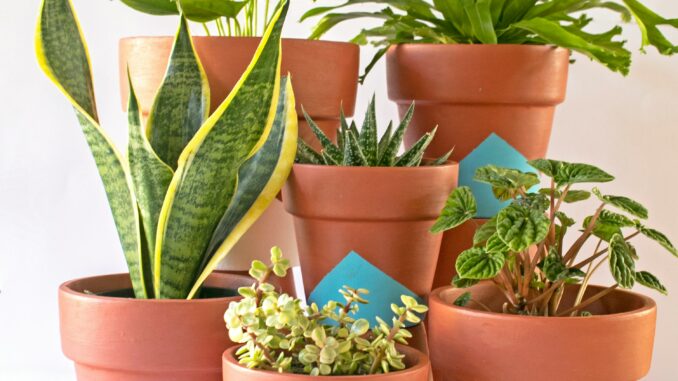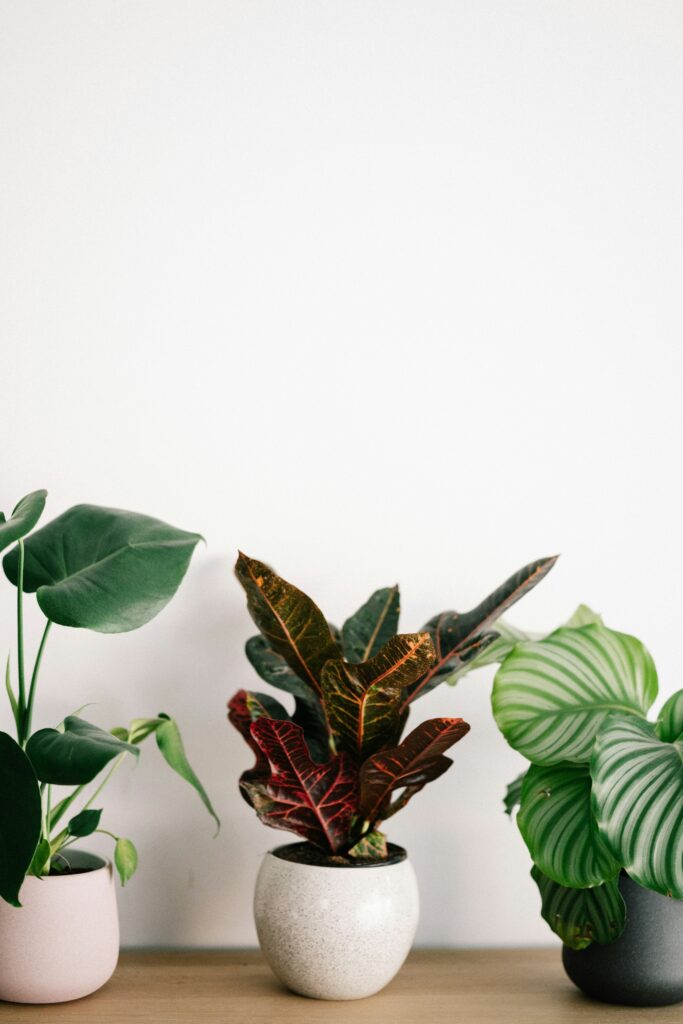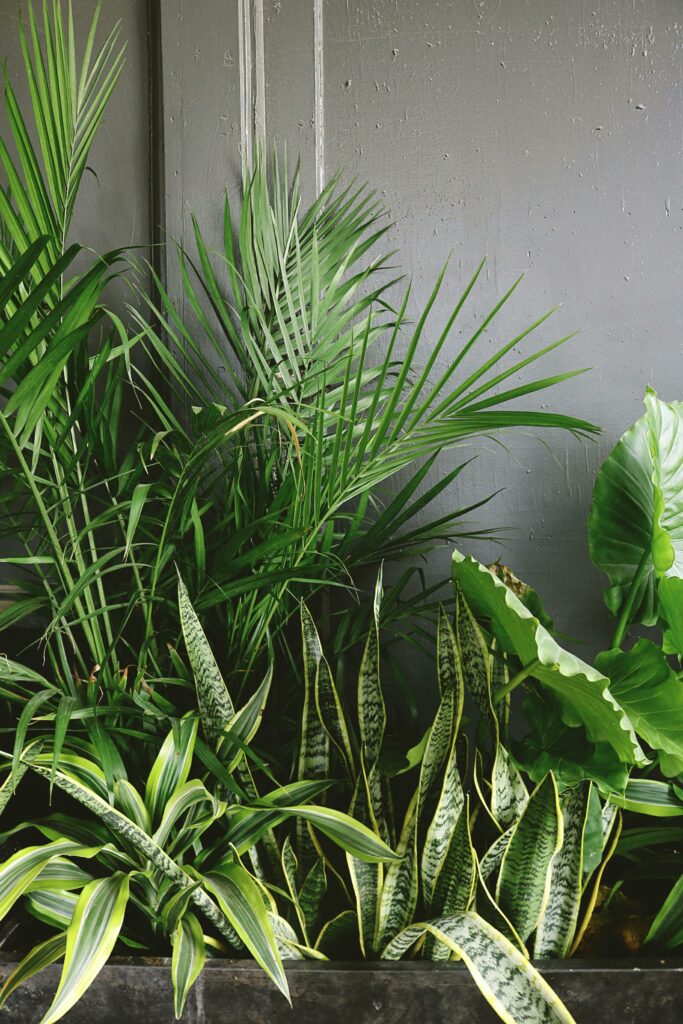

By Kelly Kellow, The Gardens on Spring Creek Horticulturist
During the winter, I browse and purchase more house plants than other seasons — to the point where the inside of my house begins busting at the seams. Now that summer is coming, I feel relieved knowing that the overflow can safely spill onto my patio outside. Have you ever thought about putting your house plants outside in the summer?
Like humans, house plants love to get fresh air after being couped up inside all winter, but it can feel like a frightening task if you’ve never done it before. Many questions may come to mind: when should you move them, where should you put them, and how much care will they need?

Moving your plants outside during the summer has definite pros and cons. On the plus side, most houseplants are from tropical areas where it gets nice and hot and thrive in temperatures between 70-80 degrees (21-26 C). Most houses only average around 65-70 degrees F (15-21 degrees C), so this move can be a welcome change. In addition, when outside, they become exposed to natural elements like air and sunlight. This exposure to warmer days and night temperatures helps form elongated stems and triggers flower initiation. Taking plants outside can also create an outdoor oasis while simultaneously de-cluttering your house’s interior. If you are dealing with aphids or other pests, outdoor living will help shake the bugs off.
Now, let’s talk about challenges for your outdoor house plants. That same outdoor heat that is good for your tropical plants may cause their soil to dry out faster, making them consistently thirsty. Wind can be an obstacle, knocking pots over, especially if you have top-heavy plants like fiddle leaf figs or Ficus trees. Also, animals might be fond of your plants. Rabbits love the juicy leaves of succulents, so beware—they will eat them all!

How do you go about taking plants outside? First, pick a place that has mostly shade. Your plants will need a few weeks to transition, living entirely in the shade before being put into full sun. Pay attention; some plants may like where they are, happily staying out of direct rays all summer. Others can transition into full sun once they adjust to the sun’s harsh UV rays. Note that this transition time is critical; sticking them directly into the full sun will burn the leaves and possibly even kill them. As you wait, pay attention to your watering, and make sure your plants don’t get dried out or sunburned. Common signs of shock are paling, wilting, or drastic leaf color change. Wait to put out house plants until night temperatures are above 50 degrees F (10 degrees C). Anything below that may cause problems with frost damage, especially if it’s colder for longer periods of time.
If you notice signs of stress during your assessments, don’t panic; bring the plant into a full-shade area and give it extra love with water and fertilizer. Hopefully, it will recover quickly and continue growing. And remember, not all house plants have to venture out; choose the ones you think would benefit most. I love putting my house plants outside. They always seem to be happier outside in nature, just like me!
Support Northern Colorado Journalism
Show your support for North Forty News by helping us produce more content. It's a kind and simple gesture that will help us continue to bring more content to you.
BONUS - Donors get a link in their receipt to sign up for our once-per-week instant text messaging alert. Get your e-copy of North Forty News the moment it is released!
Click to Donate
